The WaterSense Current Spring 2009
In This Issue X, Spring 2009:
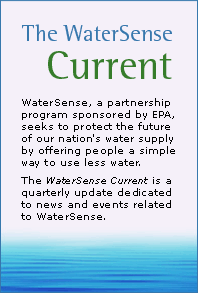 |
In This Issue: |
Earth Day: Reduce Your Water Footprint on a Shoestring
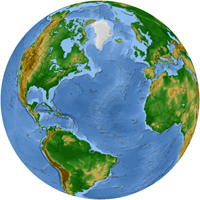
Want to save water this Earth Day, April 22, but don't have the budget for a bathroom makeover or landscaping redesign? Just take some of these 10 simple tips to heart and stop pouring money down the drain.
- Teach an old faucet new tricks. If you're not ready to invest in a new faucet, why not update your old one with a WaterSense labeled aerator? Aerators can cost as little as a few dollars.
- Perfect your timing. Once the weather starts warming up, remember to water your garden during the cool morning hours to reduce evaporation.
- Trash your facial tissues. Don't flush them—one less flush per day can save nearly 1,300 gallons of water over the course of a year. That's enough to wash about 32 loads of laundry! And speaking of laundry…
- Lighten your load. Did you know that washing clothes is the second largest use of indoor water? Combine small loads to eliminate one load per week and you'll save 2,100 gallons of water per year.
- Grow green. To maintain a green, healthy lawn, you don't need to water every day. To find out if your grass is thirsty, stick a screwdriver in the ground. If it goes in easily, don't water!
- Take a stand. Running a bath can require up to 70 gallons of water. But a five-minute shower? Just 10 to 25 gallons. So ditch the tub and stand up for water efficiency!
- Defeat drips. If you took the Fix a Leak Week pledge last month, you already know that a faucet that leaks one drip per second can waste more than 3,000 gallons of water per year. Fixing leaks is often cheap and easy—and it could reduce your water bill by more than 10 percent!
- Keep your (water) cool. Fill your glass with cool water from a pitcher in the fridge. This way, the water goes in your glass, not down the drain.
- Get to know the natives. If you're a gardener, find out which plants are native to your region. Climate-appropriate species require less water, so ask an expert at your local nursery which plants are homegrown and drought-tolerant.
- Follow the money. If you think installing high-efficiency toilets or faucets will cost big bucks, you might be pleasantly surprised. Replacing old, inefficient plumbing fixtures with their WaterSense labeled counterparts can actually save you money in the long term. To find out how much you'll save, crunch the numbers with our calculator.
For more water- and money-saving tips, check out EPA's Earth Day page. And have a happy, thrifty Earth Day!
Concerned Citizen Brings Smaller Flush to Big Sky Country

The amount of water a toilet flushes seems like an unlikely concern
to preoccupy the owner of an adventure travel company. After all,
there are mountains to climb and horses to corral. But Kent Madin,
owner of Boojum Expeditions![]() in Bozeman, Montana, was acutely aware of the need to save water
in this Western state, which depends mainly on rainwater and melting
snowpack to supply its citizens' water needs. “My wife
would call it something of an obsession,” Madin says.
in Bozeman, Montana, was acutely aware of the need to save water
in this Western state, which depends mainly on rainwater and melting
snowpack to supply its citizens' water needs. “My wife
would call it something of an obsession,” Madin says.
After returning from a trip to Europe, where dual-flush
toilets![]() are more commonplace, Madin wondered why hadn't his hometown,
and elsewhere in the United States, embraced this water-efficient
technology? Then, in January 2008, a local
newspaper article
about Bozeman becoming the first city in Montana to partner with
WaterSense sparked an idea. With a phone call to the city, Madin
helped spur on what would become the Greater Gallatin Toilet Tradeout,
a toilet replacement program for the greater Gallatin Valley around
Bozeman.
are more commonplace, Madin wondered why hadn't his hometown,
and elsewhere in the United States, embraced this water-efficient
technology? Then, in January 2008, a local
newspaper article
about Bozeman becoming the first city in Montana to partner with
WaterSense sparked an idea. With a phone call to the city, Madin
helped spur on what would become the Greater Gallatin Toilet Tradeout,
a toilet replacement program for the greater Gallatin Valley around
Bozeman.
“A toilet retrofit program,” says Brian Heaston, city conservation program manager, “was a great way to kick off the city's water conservation efforts and inform the community that the city is an active proponent of water conservation and will be for the long haul.”
The rebate program offered Bozeman municipal customers rebates of $25 or $75 on WaterSense labeled toilets, with special pricing available on certain models for a limited time. During the six-week event, Bozeman processed more than 300 rebate applications and manufacturer Kohler sold 875 WaterSense labeled toilets through Ferguson, its largest local distributor. All told, the event has saved an estimated 3.45 million gallons of water annually in and around the city of Bozeman.
Looking back nearly a year later, Madin says, “It was a universally positive response. We haven't heard any complaints [about the toilets].”
For individuals contemplating a similar event for their communities, Madin recommends starting with a broad-based partnership and reaching out to all the players. “Get a committee with a depth and breadth of perspectives,” he says, adding that academic credentials and local legislature can be a big help. “And be sure no one in the normal business chain feels threatened.”
The Greater Gallatin Toilet Tradeout included at least a dozen different individuals and organizations: the city of Bozeman, Ferguson, Kohler, state Rep. Jennifer Pomnichowski (D-Bozeman), Montana State University, Allied Waste Services, local plumbers, and the Southwest Montana Building Industry Association, among others.
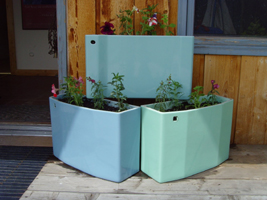
Next, Madin recommends planning an event with a clearly defined beginning and end. An event with a distinct start and finish helps to build momentum and motivates people to participate. In a timely twist, the Greater Gallatin Toilet Tradeout kicked off on World Water Day.
And don't forget about disposal. While most of the swapped-out toilets went to a disposal center for demolition, where the ceramic will be reused as aggregate in road construction projects, Madin salvaged a few of the most colorful tanks for flower planters. In his opinion, these old, inefficient toilets have ended up where they belong: pushing up daisies on his front porch.
Would You Like a Free Toilet With That?
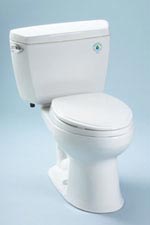
Find a WaterSense Rebate
Did you know that more than two dozen WaterSense utility partners offer rebates for customers who swap out their old, inefficient toilets for WaterSense labeled models? These rebates range from $35 to the toilet's full cost; for example, Austin Water Utility in Texas will pay back its customers for the full price of a new WaterSense labeled model, plus the installation fees!
Besides saving money on the purchase and installation of a new throne, rebate participants will also reap the savings on water bills for years to come. Check here to see if there is a rebate opportunity in your area. Rebate offers vary, so check your local WaterSense utility partner Web site for details and restrictions.
Make Bill Nye Proud


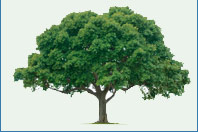
Need ideas for your kid's school science fair? Or just want to coax them to turn off the TV? WaterSense has the answers! The program has many engaging and educational materials geared toward students and teachers.
The WaterSense quiz encourages kids to rescue the water-efficiency hero, Flo, while answering questions about water use and avoiding water-wasting monsters. You and your kids can experiment with any of the tips provided and collect data on the water you'll save. Or try out the Water Savings and Energy Calculator, which can help demonstrate how much a household can save by switching out old, inefficient toilets and bathroom sink faucets with WaterSense labeled models.
For a more hands-on project, check out leak detection tips for the home. Every member of the family can help find and fix leaks both indoors and out.
And teachers should check out the educational materials provided on the Web site for grades 3 to 5. These interactive assignments not only teach students about where their water comes from and what happens when it leaves their homes, but it also encourages them to monitor their own family's water use so they can learn how to save this precious resource. See the WaterSense Kids' page for more ideas.
475 Drips Pledge to Change Their Wasting Ways
Or at least that's how many Americans took the pledge to fix a leak. Each of these households could potentially save more than 11,000 gallons per year by eliminating household leaks.
If all 475 households honor their pledge, the Fix a Leak Week campaign will save more than 5 million gallons of water annually—enough to fill eight Olympic-sized swimming pools! View a map of which parts of the country leapt to the challenge.
Even though Fix a Leak Week has passed, it's never too late to nip the drips that could be accounting for 12 percent of your water bill. Learn how you can fix a leak.
Partner Profile: Timothy Malooly

The WaterSense Current periodically profiles outstanding WaterSense partners and their achievements in advancing water efficiency and water-efficient products and practices.
With spring chasing away winter from backyards across the country, WaterSense asked for some expert advice on water-efficient landscaping from Timothy Malooly, the 2008 WaterSense Irrigation Partner of the Year.
WaterSense: What advice do you have for homeowners running their irrigation systems for the first time this season?
Timothy: If you have an in-ground system, step one is to have your irrigation system properly serviced by a WaterSense irrigation partner. Consider walking around your property with this irrigation professional and learning whether irrigation water is going where it should, in the amounts it should.
WaterSense: Why is it important to check irrigation systems after winter?
Timothy: It's important to check for damage over the winter and make adjustments as needed. Winter conditions often result in frost-heaving, or a resettling of the ground as it freezes, which leaves sprinklers pitched or set too high. It's important they are properly set. In locations where sand and salt are put on the roads, sprinklers near the street can be damaged by snowplows or might not seal or operate properly due to grit lodged inside them. Not surprisingly, spring is one of the most common periods for leaks to occur in irrigation systems. A trained technician can look for these problems, make repairs, and set the irrigation system's operation for springtime conditions.
WaterSense: Are there any gadgets that can make this job easier?
Timothy: Repair work takes a trained eye and the proper tools, but if you don't have a smart controller to automatically manage your system's watering schedule, you will do yourself and your wallet a big favor by having one installed. Smart irrigation controllers take over scheduling of irrigation cycles based on changing weather and the needs of the landscape, instead of having a robotic controller that simply repeats irrigation cycles over and over regardless of the weather.
WaterSense: What about homeowners who irrigate the old-fashioned way, with a hose?
Timothy: From an efficiency perspective, this is a tough one. One tip I might suggest is to get a battery-operated timer that attaches between the spigot and hose so the sprinkler will shut off after a given amount of time. That way, if you have to leave the property while the sprinkler is still running, the timer will shut it off automatically so you're not wasting water while you're away. Also, set the sprinkler so it doesn't water sidewalks and other hardscapes. If you're fertilizing, apply small portions at a time in order to properly water-in the fertilizer and avoid burning the landscape.
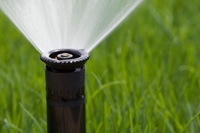
WaterSense: Is it better to water your lawn in the morning or the evening?
Timothy: In the morning. It's best to water when the weather is cooler, when the sun is coming up in the morning before noon. Dusk is not as good as dawn because if there is any extra water on the landscape overnight, it's likely to promote fungus and other diseases.
WaterSense: Do you have any water-efficient plant recommendations for gardeners?
Timothy: When replacing plants, consider using plants that are native to your region. Another tip is in the heat of summer, try not to mow your lawn as short as you might in the spring or fall. The lawn will be more resistant to heat and will look better. Also, plant shade trees! Once established, they will help reduce water needs by cooling off the landscaping. Properly selected and placed trees can help cool inside the house too, which reduces the need for air conditioning and saves money.
So Tell Us, What Do You Really Think...

Want to help WaterSense make a bigger splash? We're looking to
improve our Web site and need your opinions on how to make the site
more useful to our visitors. If you would like to participate, e-mail
us your comments about the WaterSense Web site. Or have us call
you by filling out a brief
form![]() .
A WaterSense representative will contact you via phone.* Thanks
for your feedback!
.
A WaterSense representative will contact you via phone.* Thanks
for your feedback!
* Note: Individuals will be selected at random and contacted for feedback.




